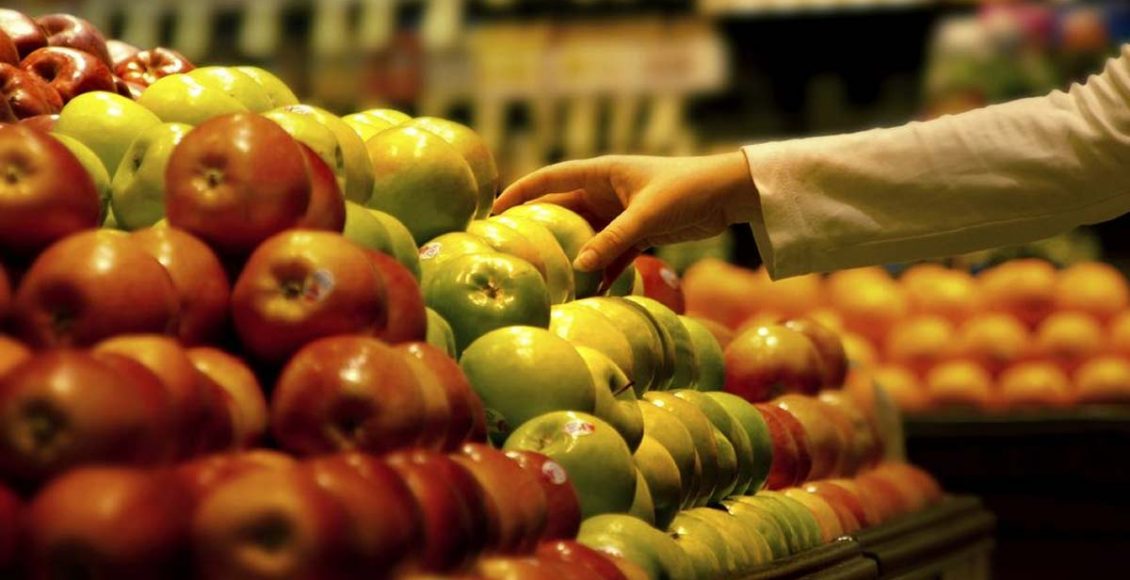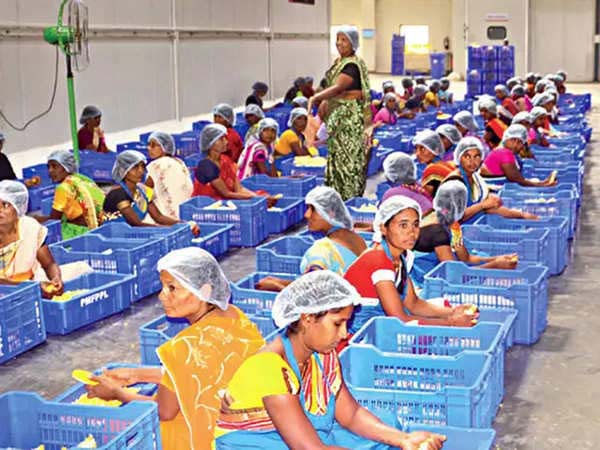
Can we have companies like Zespri or Chiquita in India?
The production of fruits and vegetables is estimated to touch 313 million MT in 2019-20, and has been growing at an average rate of 8% in the last five years, as per the advance estimates of the Ministry of Agriculture. This secures India the top two positions for the production of fruits and vegetables, respectively. A visible shift in the agriculture pattern and farmer mindset can be perceived from the increasing acreage and production of horticultural crops in comparison to other food crops, owing to factors like increasing demand, being less labor intensive, having a shorter duration etc. India is one of the leading producer of some fruits and vegetables like Mango, Banana, Citrus fruits, and Onions among others. Despite holding a top position for quite some years, the contribution of Indian horticulture to International trade is not significant. The domestic market also has been facing challenges like extreme price swings, poor value realization to the farmer and wastage at all levels.
This calls for three questions – Despite being one of the largest producers, why did we not see our own domestic companies’ progress similar to the likes of Dole, Delmonte and Chiquita? Why are cooperatives like Amul doing alright in the dairy segment but not in the agricultural segment? Why do we not realize the value of our produce? The answers to these questions are intricately interlinked to each other.
“The average farm or orchard holding is very small in India”- this has been the most commonly stated reason for the failure to incorporate most of the modern interventions into our agricultural systems. Since the land holdings are not going to change in the near future, it’s time we adopt a different perspective to tackle the challenge. We cannot build enterprises like those we discussed earlier, with approaches similar to the ones they have employed. But, the important point is that they are real- life examples of the possible value creation. We should credit the research and development activities undertaken by them in perfecting the varieties and in standardizing the agronomy, production and post-harvest practices.
Indian horticulture also consists of enterprises in the area of plantation crops like Coffee, Tea and Rubber. Discounting past colonial origins and deforestation we can look for some positive learnings, from such enterprises, to suit the local conditions. We have held on to the issue of small land holding conveniently for long, rather than making it a central point and designing solutions like farm mechanization, post-harvest infrastructure and agri-business systems around it. Combining the complex factors like diverse genetic pool, agro-climatic conditions and consumer preferences we should be able to build a model that is beneficial to all stakeholders from farmers to consumers.
We have failed to appreciate the value of our horticultural produce- collectively, at the country level and individually, at the farmer level. This explains the placid approach for failing to adopt even the simplest interventions for loss mitigation. Expecting a better value for the produce should be preceded by better care during production and handling at all stages. The farmers should change their way of perceiving value from a “lot” based approach to an “individual fruit”. To understand the difference, we should compare the better handling practices employed in and value received by exotic fruits like Kiwis, Apples etc. to those of our local fruits. Why do we not handle our Mangoes with similar care? A simple operation of de-sapping and proper cleaning of fruits at farmer level can decrease the post-harvest diseases and improve the product appeal to a greater extent.
Using properly designed packaging structure by an aggregator will reduce transportation losses. At an Individual stakeholder level these are perceived as additional activities and cost for which one is not realizing any value. This is true when we compare the situation with current product, market standards and this is where a collective approach will help in harmonizing therefore mentioned factors. Support by means of providing infrastructure and fiscal assistance is required to sustain this harmonization process in the initial periodwhich can be extended either by Government agencies or Private companies who want a strong presence like that of Delmonte, Chiquita, and Zespri etc.
An interesting case to look at is-Milk. Being more perishable than fruits and vegetables, milk is handled better and the co-operatives are successful in the dairy sector. If we look at this phenomenon, this gives us some important answers. The milk collection centers and bulk milk chilling centers are present widely, are of viable scale, and meet the requirements of small dairy farmers at village or taluk level. These co-operatives are able to pool the produce from small farmers and connect them to the processing centers, forming a wide nodal network. Although dairy cooperatives have their own set of challenges in other aspects, they were able to forge systems to consolidate the produce and standardize the operations. This scenario lays the foundational case for the need of modular, small scale post-harvest infrastructure at the village level.
We have been trying to adapt technologies created to address the needs of other agricultural systems, where the orchards and the quantum of produce handled in a single tract are huge and the subsequent supply chains are well developed. The problems faced by our agricultural sector are unique and the interventions should be designed with profound understanding of the local conditions. Research and development in areas like modular multi commodity cold storage and pack house systems, harvesting equipment for small farms, fruit ripening models with improved traditional ripening structures by using local resources, low cost packaging designs etc. will pave ways for solving the problems faced by local agricultural sector. This will also increase the chances of taking up good agricultural and post-harvest practices. These technical and infrastructural improvements should be combined with better business and operational models to realize the true value and share the benefits to all stakeholders.
Farmer Producer Organization (FPO) are gaining popularity and a lot of support is being extended from the government as well. This can be seen as an opportunity to create similar enterprises, with local stakeholders, suiting the local conditions.  One point to note is that without addressing the primary issues at a broader level, there is a high chance of failure in this case as well. The products, technology, and conventional solutions around the world, as we know them, are changing at a very fast pace. We have to make an effort to catch up in this aspect and might have to jump few stages to be relevant. Additionally, we need to be very selective in adopting technologies/ practices relevant to Indian conditions. The management systems adopted by the FPO’s also play an important role in the success of these entities. The key issues to be addressed on priority by central or local body controlling the FPOs are leadership issues, Information management, post-harvest practices and skill development.
One point to note is that without addressing the primary issues at a broader level, there is a high chance of failure in this case as well. The products, technology, and conventional solutions around the world, as we know them, are changing at a very fast pace. We have to make an effort to catch up in this aspect and might have to jump few stages to be relevant. Additionally, we need to be very selective in adopting technologies/ practices relevant to Indian conditions. The management systems adopted by the FPO’s also play an important role in the success of these entities. The key issues to be addressed on priority by central or local body controlling the FPOs are leadership issues, Information management, post-harvest practices and skill development.
Aligning the cluster development, along with the promotion of FPO, can reduce the complexity in agri supply chains and bring up a holistic approach for value addition of fruits and vegetables.
Identification of key clusters for specific fruits and vegetables, and harmonizing various elements like seasonality, production cycles, markets, available infrastructure etc. will help in establishing a strong network. For example, in India there are sizeable Mango clusters in Andhra Pradesh, Telangana, Tamil Nadu, Maharashtra, Gujrat and Uttar Pradesh. The seasonality varies from state to state and ranges from mid- March to mid-September. If we consider each state individually, their peak season ranges from two to three months But, on the whole, the production season lasts for six to seven months, with a wide range of mango varieties available across the country. Either the government or private players like large retail chains and agri-business companies can look into integrating these clusters by creating infrastructure at key points and designing appropriate operational and management systems, there by gaining a hold on procurement. The procured produce can then be distributed across the country for a longer duration of time and the possibility of using the infrastructure for other horticulture products in lean season can be explored. Similar networks should be developed in clusters producing other fruits and vegetables.
These production clusters are analogous to a company having multiple manufacturing units across the country. It’s time we change perceptions associated with small farmers and farm holding, scattered production etc.; we should start looking at them as an opportunity and instill an enterprise approach in handling our horticultural produce. In the last 20 years, we have seen good number of cases of price extremities, glut situations in fruits and vegetables, leading to food loss.
We should have learnt our lesson to prevent such situations from happening in every crop season, in one or the other part of the country. We have enough data and analytical tools to understand the causes, loss patterns and act accordingly, to prevent the food loss. Adopting simple interventions in post-harvest handling can be a starting step in improving the value of our fruits and vegetables
Harmonizing our production clusters and realizing the true value of our horticultural produce can help farmers get a fair share form the price paid by consumers. Thereby, improving farm income and improving the living conditions of our farmers. This would also allow enterprises to gain a share of margin while ensuring the consumers receive high quality fruits and vegetables.
Author

Connect with Author at: E-mail agribusiness@sathguru.com
 Grow Beyond
Grow Beyond 

